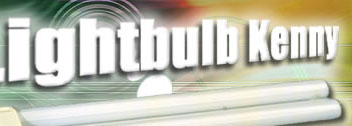Full-Spectrum Lighting Effects on Performance, Mood, and Health
Jennifer A. Veitch, Ph.D.
National Research Council of Canada, Institute for Research in Construction, Ottawa, ON K1A 0R6
One measure of the popularity of the notion that full-spectrum fluorescent lighting is beneficial is its appearance in comic strips such as the panel of "Fisher" reproduced in Figure 1. Another is the frequency of newspaper articles reporting that one expert or another has proclaimed that lighting that mimics daylight is superior (e.g., Blumenthal, 1992; "Report card on classroom lighting", 1993; Cook, 1994; see also Gifford, this volume, for other examples).
At the Institute for Research in Construction, regular telephone inquiries to the Lighting Group about full-spectrum fluorescent lighting outweigh all other topics by a wide margin. The calls come from school boards, unions, property managers, and from people who have read these media reports. All want to know where they can obtain more detailed information in a concise format. They want to know if what they have read is true: Does the scientific evidence show that dramatic improvements are possible in academic achievement, health, mood, and office work performance, if full-spectrum fluorescent lamps are used in place of other lamps?
Until now, there has been no single source to which we could direct callers. The scientific evidence, pro and con, existed in scattered sources -- research journals, conference proceedings, unpublished theses and dissertations, and unpublished reports -- to which many people lack access.
Moreover, the information is complex, conflicting, and technically detailed, making it difficult for a lay person to evaluate it in its totality.
Figure 1, Fisher, January 14, 1994. Philip Street, 1994. Used by permission.
This report is intended to fill that gap by bringing together the views of both sides in the debate, together with a comprehensive, critical review of the literature as a whole. The project began with a symposium, which I chaired, at the 101st Annual Convention of the American Psychological Association, held in August, 1993, in Toronto, Ontario, and entitled "Full-Spectrum Lighting Effects on Performance, Mood, and Health". The papers presented by the four speakers are reproduced here in the order in which they were presented, followed by a transcript of the discussion period.
The four speakers are representative of the diversity of interest, expertise, and opinion surrounding this debate. Mr. Daniel Karpen is a professional engineer from New York who is well known among lighting researchers and designers for his advocacy of full-spectrum, polarized lighting as an effective and efficient lighting system.
Dr. Warren Hathaway, formerly of Alberta Education, has conducted a longitudinal field experiment of various light sources in classrooms, which he reports here. Dr. Peter Boyce of the Lighting Research Centre at Rensselaer Polytechnic Institute is an eminent expert on human factors in lighting. Dr. Robert Gifford of the Department of Psychology at the University of Victoria is a widely-respected environmental psychologist whose research publications include several studies of behavioural effects of interior lighting.
Following the symposium, a comprehensive literature review was prepared by me and my assistant, Shelley McColl, at the Institute for Research in Construction for publication in this report.
Our review paper organizes and summarizes the broad literature, and provides a critical review of the state of knowledge about full-spectrum lighting effects on people. My conclusions regarding the choices for lighting design are presented in the final chapter of this report, and are an integration of the information presented in all the preceding chapters.
Another measure of the widespread interest in this subject is the range of firms sponsoring the symposium and the production of this report. This report is entirely the work of the editor and contributing authors, but would have been impossible without the financial support of the Canada Mortgage and Housing Corporation, Duro-Test Canada Inc., General Electric Lighting, Manitoba Hydro, and Osram-Sylvania Inc.
We gratefully acknowledge their contributions to this project. The project sponsors were each invited to provide written comments on the report and its conclusions, and these appear in the Appendix.
References
Blumenthal, R. G. (1992, December 31). New York schools consider installing full-spectrum lights to help students. The Wall Street Journal, p. B2.
Cook, D. (1994, March/April). A case of daylight robbery. Psychology Today, 27(2), p. 8.
Gifford, R. (1994). Scientific evidence for claims about full-spectrum lamps: Past and future. In J. A. Veitch (Ed.)., Full-spectrum lighting effects on performance, mood, and health (IRC Internal Report No. 659, pp. 37-46). Ottawa, ON: National Research Council of Canada, Institute for Research in Construction.
Report card on school lighting. (1993, September 4). The Globe and Mail, p. D8.


